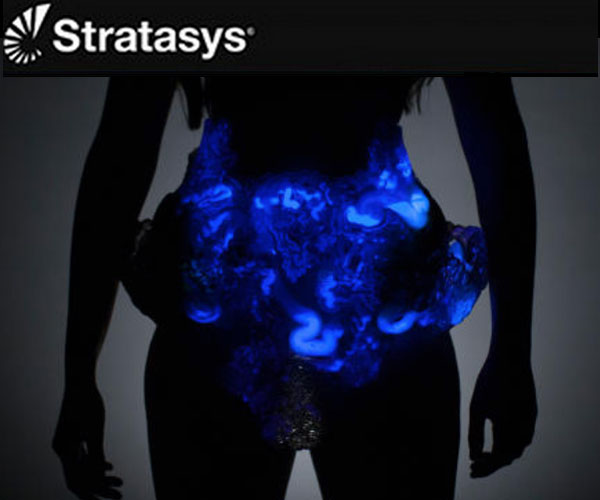Repost from www.fastcodesign.com
Fitness trackers, email-alert rings, bracelets that tell you how much sun you’ve gotten: your average wearable is good at conveying information and not much more. But in the hands of Neri Oxman, an architect and founder of the Mediated Matter research group at Massachusetts Institute of Technology, wearables aren’t just passive lifestyle devices; they could generate the food, energy, light, and oxygen to keep us alive.
In a series of concept wearables that augment human biological systems, Oxman implants synthetically engineered microorganisms in custom-designed vessels. Worn externally, these devices—collectively known as the Wanderers: An Astrobiological Exploration—create the resources that an interplanetary traveler would need to survive in other climates. “Our goal was to design wearables that could have a symbiotic relationship with the human body,” Oxman says.
There are four devices, and they’re modeled after the digestive, nervous, skeletal, and integumentary (hair and skin) systems. Each offers the biological counterpart to the classic life-sustaining elements of earth, water, air, and fire, with different microorganisms implanted in the device’s 3-D printed vasculature.
Take Mushtari, a 33-foot-long, corset-like wearable based on the gastrointestinal tract. Created from acrylic resin, it features channels of different widths and opacities that, by design, help recreate specific biological functions. The stiff, clear sections let in external light, allowing cyanobacteria and E. Coli inside to photosynthesize, producing sucrose to feed the body. In the denser, reddish areas along the corset’s left and right sides light is blocked, providing surface area to collect these sugary consumables.
“You’re designing a 3-D printed template which defines what type of biological functionality can take place in which location within the wearable,” Oxman says of Mushtari’s shape. “The design then becomes not only a wearable microbial factory, but also literally a second skin that can mediate between the external environment and the inner body.”
Other wearables in the series bio-mineralize, creating calcium that can strengthen and augment human bone, while others fluoresce, emitting photons that can light the way in pitch darkness.
Stratasys additively manufactured Mushtari and its brethren, creating the devices with its multimaterial Connex3 3-D printer. Generative modelers Descriptiv assisted on the form. Will Patrick from Oxman’s lab was lead researcher.
While Wanderers is a speculative project that lives in that space between fantasy and function, Oxman believes different aspects of the designs might lead to additional, more pragmatic research. For example, her team at MIT is aiming to develop some of the 3-D printed valves that route fluids, as well as the membranes that can separate foods and fuels.
Her ultimate goal, though, is to integrate the microbial cultures into the 3-D printed material itself, rather than create 3-D printed vessels embedded with them. In essence, that cuts out the middle man, allowing for a fully organic, biologically sustainable wearable.










Leave A Comment